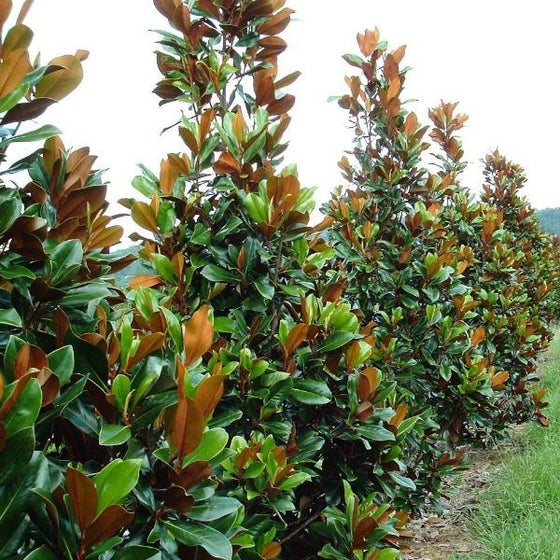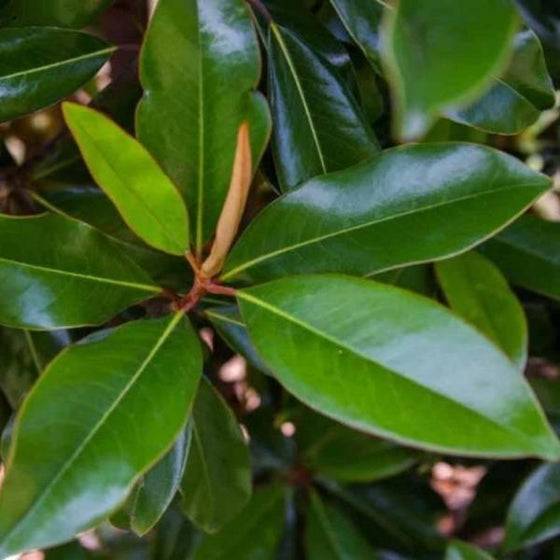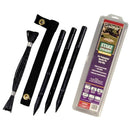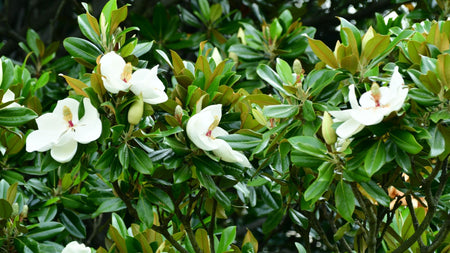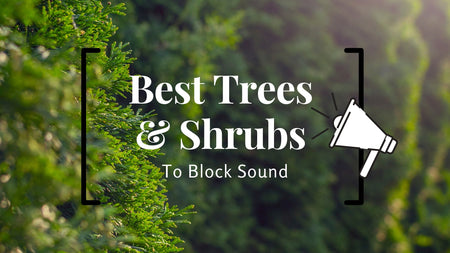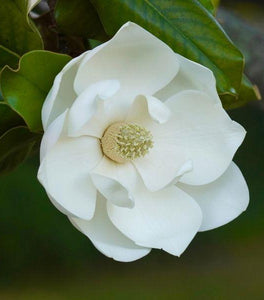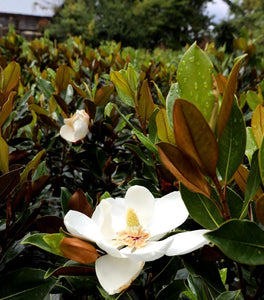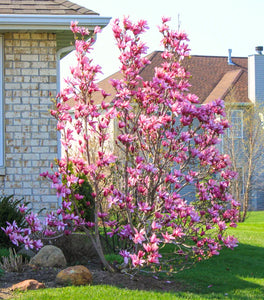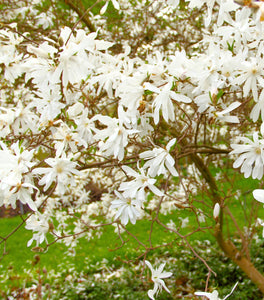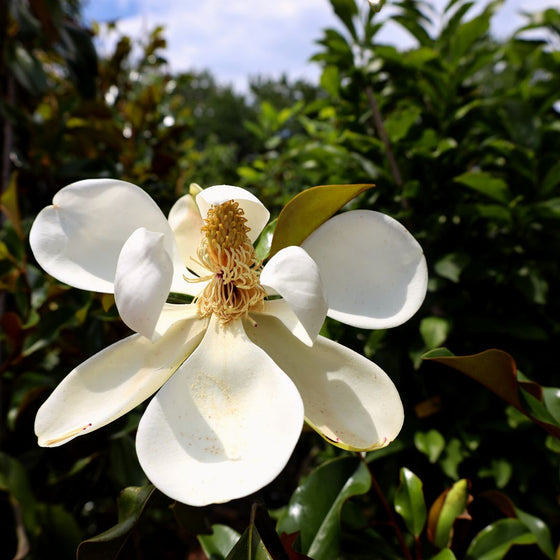
Images Depict Mature Plants
Brackens Brown Beauty Magnolia Trees for Sale Online
Bracken's Brown Beauty Magnolia is a pyramidal tree with beautiful, large, white, fragrant flowers and charming green and warm cinnamon-tinted leaves. This Evergreen tree is an exceptional choice as an accent or specimen tree for your garden.
Scientifically classified as 'Magnolia Grandiflora,' the Brown Beauty is a significant member of the Southern Magnolia cultivars. The tree is loved for its stunning appearance and extensive winter hardiness. It is a compact tree typically growing 35 to 50 feet tall with a dense, narrow oval crown.
The blooms on these magnificent specimen are quite striking. The Bracken's white flowers will typically appear in late spring, with sparse flowering throughout the summer. As a bonus, these flowers give way to spherical fruiting clusters that mature in late summer and release red-coated seeds in the fall.
This medium-sized Evergreen Magnolia grows best in well-draining soils and full sun but tolerates partial shade and decently moist soil. Like most Magnolia, this tree grows best on the coastal plains of the southeastern United States. This tree differs from its cultivar in that it tends to hold onto more of its foliage in the winter months and is much hardier when it comes to surviving in colder temperatures.
The tree's condensed growth habit and its gleaming foliage and blooms make it ideal for adding scale, dimension, and interest to a landscape.
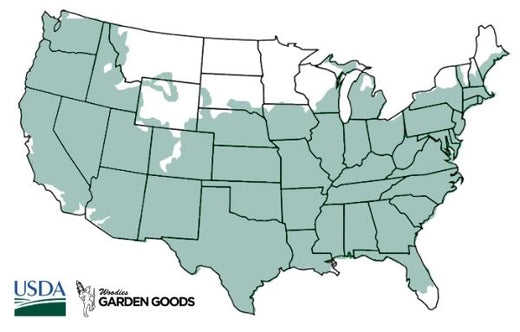
| Hardiness Zone: | 5-9 |
|---|---|
| Mature Height: | 35 to 50 Feet |
| Mature Width: | 15 to 30 Feet |
| Classification: | Broad leaved evergreen tree, spring flowering |
| Sunlight: | Full sun |
| Habit: | Upright, pyramidal to oval |
| Foliage: | Dark green topside with cinnamon colored underside |
| Flower Color: | White, fragrant flowers in late spring |
| Pruning Season: | No pruning needed |
| Soil Condition: | Any well drained soil |
| Water Requirements: | Water well until established |
| Uses: | Tolerates moist soil and full sun. Full sun brings out the best fall color. Will adapt to drier sites |

